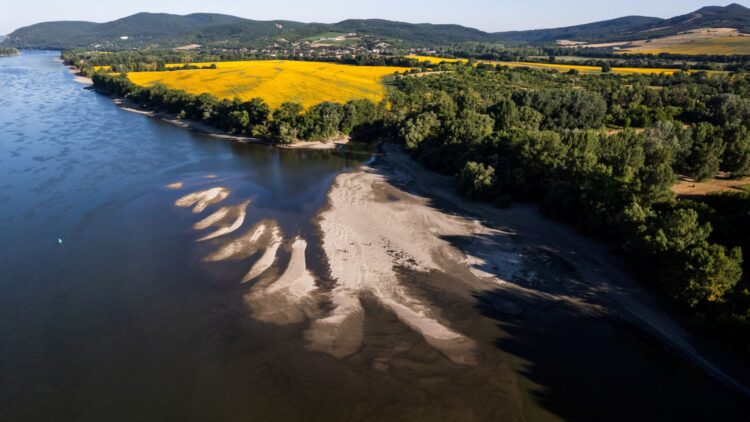The Danube River is experiencing low water levels below the minimum expected level. People typically picture boats floating on calm waters, people sitting by the banks, and mild breezes when they think of summer evenings by the river. The powerful Danube River frequently serves this lovely function for the inhabitants of Budapest as a representation of connection, life, and history. However, something unforeseen this summer has made riverbank life seem more like a scenario from a nature documentary. Unfortunately, it is headed down the road of drying up soon.
Low river water at the Danube River have attracted a lot of mayflies
Mayflies on the Danube River in Budapest are swarming earlier and in greater numbers than usual this year due to low water levels and an unusually hot summer, filling the air along the riverbanks as they are drawn to the city lights. Hundreds of thousands, sometimes millions, of mayflies engage in a frantic rush to mate and reproduce before they perish within just a few hours.
Mayflies live for less than a day after they hatch, and their abundance is closely connected to the health of the Danube. Danube mayflies usually start swarming in August, but this year they began in mid-July and are expected to last for weeks. Researchers say their early appearance in huge swarms could be linked to higher temperatures. Gyorgy Kriska, associate professor at Eotvos Lorand University in Budapest, said that,
“We have observed that massive mayfly swarms occur in years when the water levels are particularly low.”
As the river’s water flow reduces, it affects shipping and general river health
Earlier this month, unusually low water levels disrupted shipping along the Danube, Europe’s second-longest river. Low water means more sunlight reaches the riverbed, helping algae grow, which provides food for the mayfly larvae, Kriska said. Danube mayflies did not swarm for about four decades, as the river was too polluted.
They returned in 2012 when the Danube became cleaner due to the construction of wastewater treatment plants, he added. The mayfly is a protected species, with the notional value of a single specimen being 10,000 forints ($30). As mayflies swarm upriver after mating, they can be confused by city lights or the shadows of bridges.
Environmentalists and shippers are concerned about low water levels
This is very worrying, as this is considered a historic river. The rise in global warming and climate change has contributed to this situation. Furthermore, one indication of the more significant problems brought on by declining water levels is the invasion of mayflies. Nowadays, it is difficult for cargo ships to navigate in narrow areas without causing damage to the riverbank. Some ships have been forced to wait days for better circumstances.
To help them as much as possible, Hungarian researchers invented and installed special blue lights on two bridges. Kriska said,
“Our lights simply keep them here, … they continue to fly in front of the lamp … and crash into the water. This way, we can ensure they stay above the water, and the next generation survives.”
This unexpected surge in mayflies is a reminder to the people of Budapest of how nature reacts to changes in the environment. From trade to tourism, the Danube has always influenced life along its banks. The river is now demonstrating the fragility and interconnectedness of these systems as a result of climate change and the increasing frequency of droughts. Many people are left wondering how the Danube and the cities that depend on it will change if low water and bad weather become the new norm, as people clean insects off pavements and ships wait for deeper waters.

